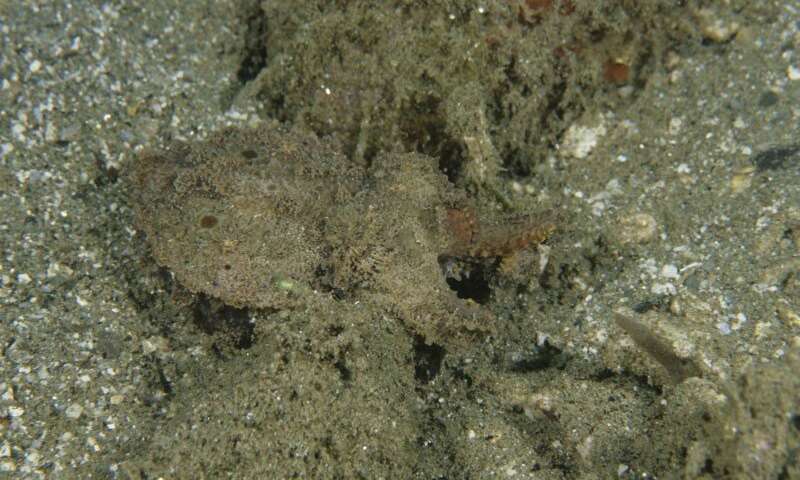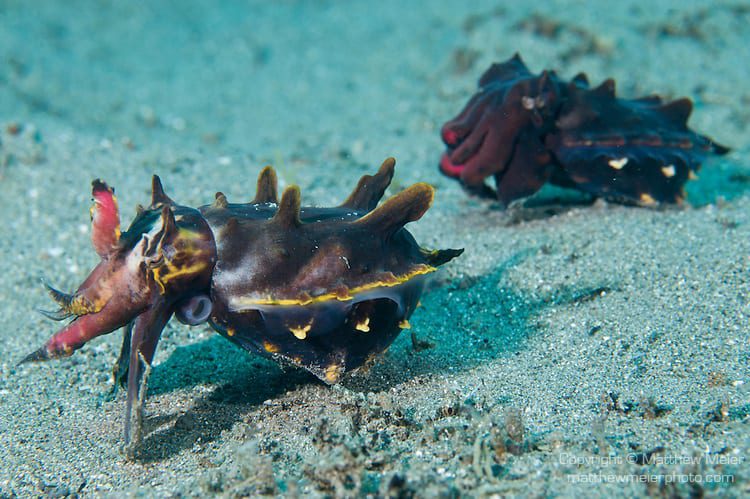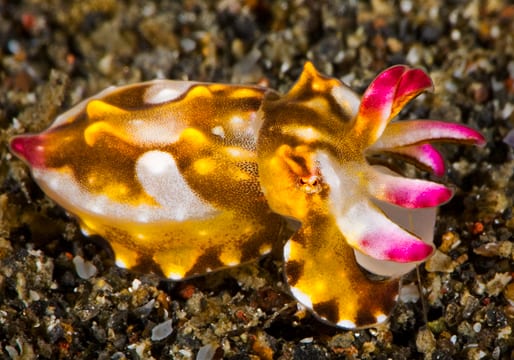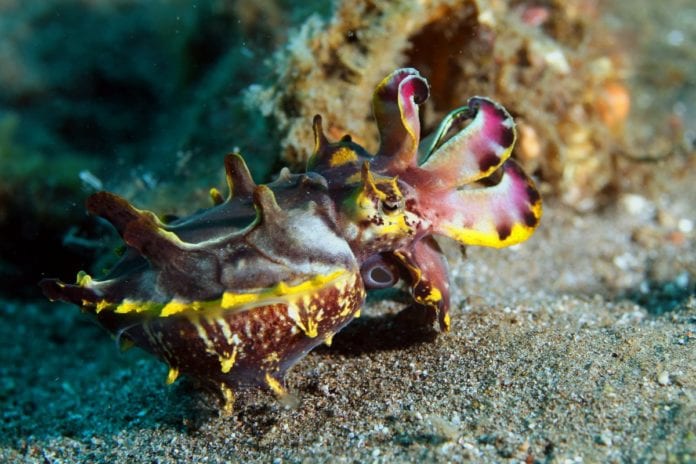A new study from the Roger Hanlon laboratory at the Marine Laboratory, Woods Hole explains a lot about the intriguing behaviour of the “Metasepia Pfefferi”, also known as the Flamboyant Cuttlefish. This species of cuttlefish can be found in tropical Indo-Pacific waters off northern Australia, southern New Guinea, as well as numerous islands of the Philippines, Indonesia and Malaysia.
Roger Hanlon, curious to know more about the species, carried out two field studies off the coast of North Sulawesi, Indonesia which lasted for over eight days in 2002, and again for eleven days in 2019. “This animal is well known in the Internet community, has been on TV many times, and is popular in public aquariums,” Hanlon says. “In almost all cases, [its skin] is showing this brilliantly colourful flamboyant display.”
But in reality, they are just the opposite, as they normally just move along the seafloor at a slow pace taking on the colour of mud and sand to camouflage themselves. “It turns out in nature, flamboyant cuttlefish are camouflaged nearly all of the time. They are nearly impossible to find,” he says.

The cuttlefish skin carries specialized pigment cells or chromatophores that enables them to change the colour of their skin. This colour changing comes in handy when their camouflage fails, and they want to threaten or confuse their predators. They can do this in 700 milliseconds and continue to switch between muddy and bright colours until they can escape from their predators.
“The flamboyant display is common when a diver approaches close enough to photograph, which is why the public may think this species always looks so colourful,” Hanlon says. “But it is rare to see this species in flamboyant display in the wild.”
A flamboyant courtship
Male cuttlefish also seem to use their flashy bright coloured patterns to charm the females and also in cases of love triangles, when they have to fend off other males. When flirting with the females, they show off their colours while moving their mantle stripes in a movement called ‘the passive cloud’. The researchers observed two gestures, one of which is arm-waving (similar to a human bowing) and the other is kissing (tapping on the arms of the female).
Males when fighting, display two body patterns. The side displaying bright coloured patterns faces the female, all the while flirting with her, and the other side which faces the male displays a white pattern showing aggression. Hanlon believes that theses gestures are comparable to what some of the most sophisticated birds do and even some primates.

In one case, the male competition ended abruptly when one of the males, while facing the female and waving and kissing, backed into a camouflaged scorpionfish and was eaten! “Sex can have a real cost,” Hanlon notes. Females seemed to be unimpressed by most of the flirting. The females rejected almost 50% of the males who attempted to mate with them. It was observed that out of 108 kissing gestures only 20 resulted in mating.
Most of the mating took place as a reward to the males who were very diligent and hard-working. But at other times, the female seemed very willing herself, widely spreading her first three arms and allowing the male to quickly deposit spermatophores into a pouch under the female’s mantle.
After mating, the female lays her eggs one at a time, deep within a den, crevice or on ledges in coral, rock or wood, to hide them from the eyes of the predators. She then covers her eggs with a protective sheath and cements the eggs to the roof of the den or crevice. The eggs are then left to hatch by themselves. One female cuttlefish can mate with several males. These species only live up to 18 to 24 months and the females die soon after mating and laying their eggs.

The researchers are curious to find out how a female cuttlefish decides which flirting male to choose and mate with. They think that aquarium studies, scuba divers, bright lights, and several other human activities, may have disturbed the flamboyant cuttlefish and led them to behave differently than they normally do, to mislead people into thinking that they are always bright and flashy.
“Birds are renowned for highly evolved visual displays that depend partly on dramatic postural changes (with wings of different colour and pattern, in particular), yet this invertebrate cuttlefish species has evolved equally dramatic and complex displays mainly with its skin colouration,” Hanlon says.
Further Reading:


